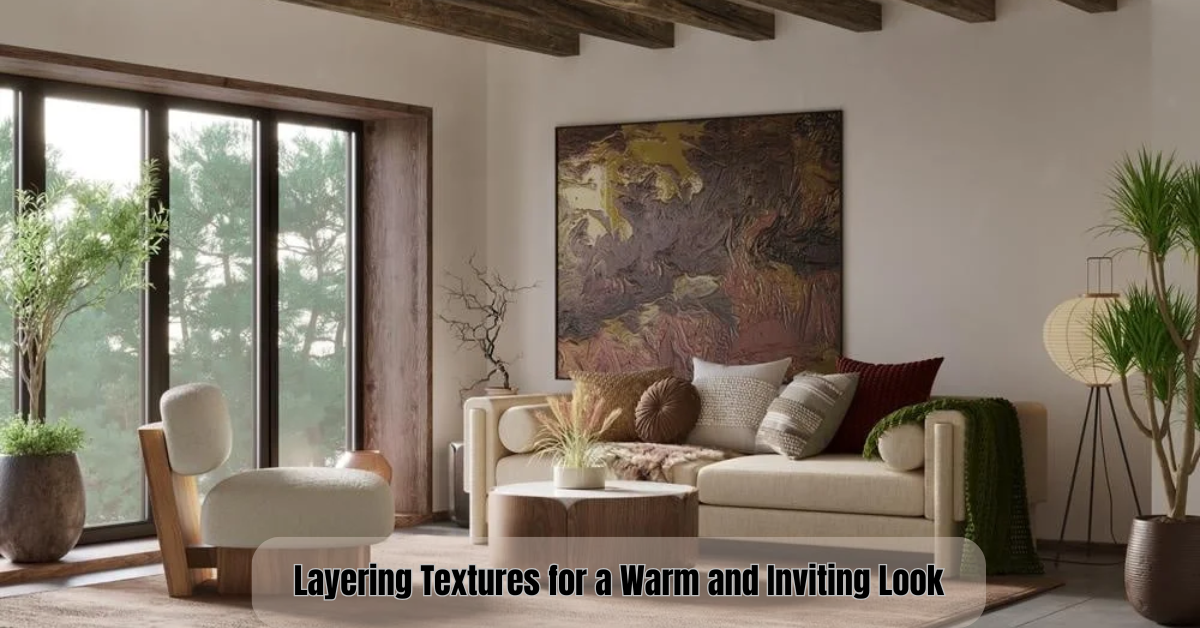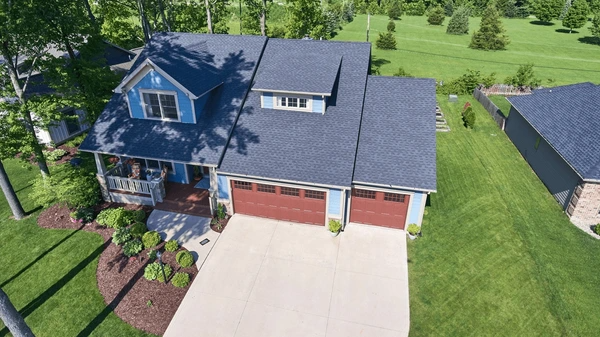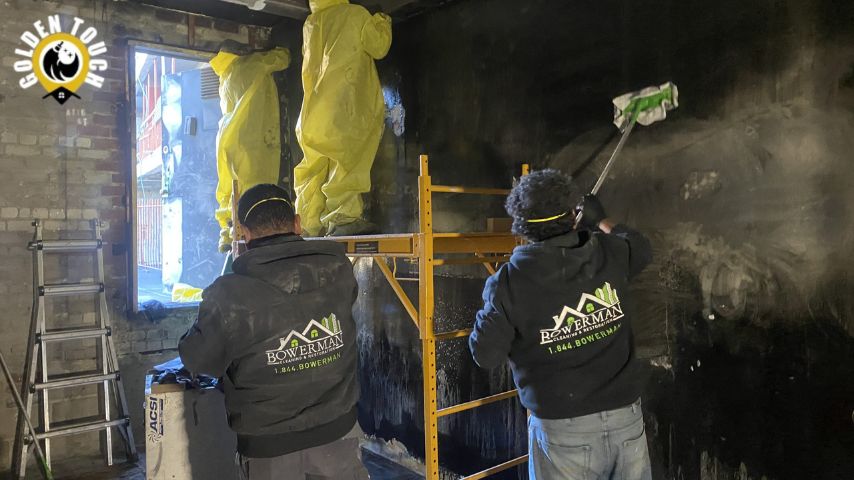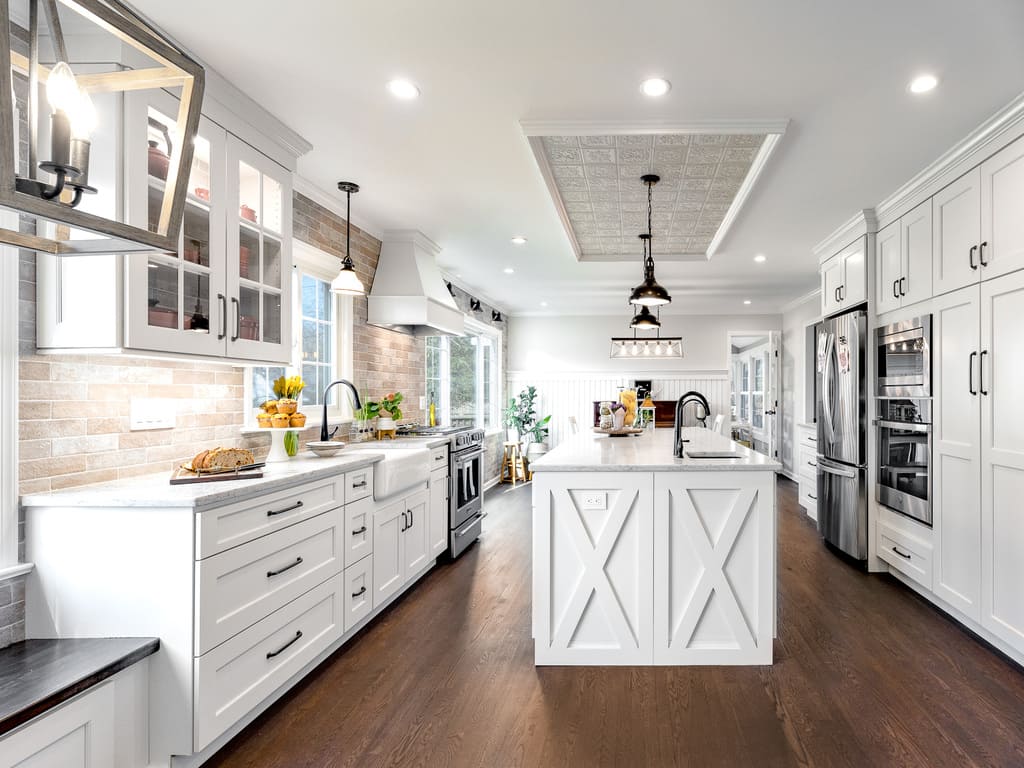Creating a warm and inviting space is a goal for many, and texture is a powerful tool in achieving it. Interior decorators know that layering textures is essential for adding depth, interest, and a cosy feel to any room. But how does one layer textures effectively? Here, we’ll explore the art and science of layering textures, with tips to help you create spaces that feel both refined and welcoming.
1. Understanding the Power of Texture
Texture is the visual and tactile quality of surfaces in a space. It can be soft, hard, smooth, rough, shiny, or matte. By layering textures, interior decorators build contrast and add richness to a room, engaging the senses and making spaces feel more lived-in and warm. Texture also plays a big role in influencing the feel of a space: a room with hard, smooth surfaces might feel sleek but cold, while a room with soft, rough textures can feel warmer and more inviting.
2. Start with a Base
The first step in layering textures is to start with a solid base. This could be your primary furniture pieces, like a sofa, bed, or dining table. Think about the base texture as the foundation upon which you’ll build the rest of the room’s feel. For instance, in a living room, a neutral sofa with a subtle woven texture can provide a simple canvas. Interior decorators often choose timeless, versatile materials like linen or cotton for this purpose, as these materials can easily adapt to seasonal changes and different design styles.
If your base layer is smooth and sleek—like leather or velvet—you’ll need to bring in contrasting textures to prevent the room from feeling flat. Conversely, if your base has a more textured feel, you’ll want to balance it with smoother surfaces elsewhere.
3. Add Softness with Fabrics
Once you have your base layer, start adding softer, cozy elements. Throw pillows, blankets, and rugs are ideal for creating warmth and comfort. Interior Designers in Chennai suggest mixing different fabric textures within these accessories, such as pairing a chunky knit throw with silk or velvet pillows.
Layering different fabrics also brings in subtle visual interest without overwhelming the space. For example, a living room with a sleek leather sofa can be softened with a cashmere throw, a jute rug, and woolen cushions. The variety of textures in this scenario helps avoid monotony while creating an inviting vibe.
4. Bring in Natural Elements
Natural textures are essential in making a space feel grounded and inviting. Elements like wood, stone, wicker, and rattan add an organic feel to the room. Interior decorators often incorporate wood furniture pieces, like coffee tables or sideboards, as these materials lend a rustic, earthy touch. Stone accents, such as a marble tabletop or stone fireplace, introduce a cool contrast that adds sophistication while complementing warmer, softer textures.
Plants are another way to add a natural touch to any space, with their own subtle textures. The greenery and the texture of leaves can bring a refreshing liveliness to a room, balancing denser textures like wool and leather. Pots in woven baskets, terracotta, or ceramic can also contribute texture and depth.
5. Play with Metal and Glass
For additional contrast, incorporate materials with sleek finishes, such as metal and glass. Interior decorators use metal and glass to balance out soft textures and keep the room from feeling overly rustic. A glass coffee table can add an airy quality to a room filled with heavy fabrics, while metal accents—like brass light fixtures, copper planters, or a chrome side table—can add a hint of glamour and sophistication.
Metal also reflects light, creating an inviting glow and adding visual interest. Glass, on the other hand, is sleek and understated, making it an ideal complement to more textured surfaces without competing with them.
6. Incorporate Layers through Wall and Floor Textures
Walls and floors are often overlooked as potential sources of texture. Interior decorators use wallpaper, exposed brick, wood paneling, or shiplap to create an interesting and warm background for other design elements. Even a simple painted accent wall can add depth when layered with artwork, mirrors, or wall-mounted shelves that introduce their own textures.
Rugs are a perfect way to bring layered textures to the floor. Consider layering a smaller, textured rug over a larger, neutral rug for a cozy effect. You could use a jute or sisal rug as a base layer, then add a smaller, plush rug on top to create contrast and warmth.
7. Mind the Color and Pattern Balance
While texture is essential, color and pattern are equally important for creating balance in a room. Interior decorators know that too many contrasting colors and patterns can make a space feel cluttered rather than inviting. Stick to a cohesive color palette and introduce patterns sparingly to avoid overwhelming the space.
For instance, if your throw pillows and blankets have bold patterns, consider choosing a more neutral rug to ground the room. Likewise, if your walls are richly textured—such as with a brick or wood finish—keeping furniture and accessories in neutral tones will create harmony.
8. Experiment and Adjust Seasonally
One of the best parts of layering textures is that it can be flexible and seasonal. Interior decorators in Chennai often recommend changing up smaller elements, like pillows and throws, as the seasons change. Heavier textures, like wool and fur, are perfect for colder months, while lighter textures, such as linen or cotton, can help a space feel airier and cooler during the warmer months.
Experiment with various textures until you find a balance that feels right for your space. The key is to have fun and to layer with intention, creating a room that reflects your personality and style.
Layering textures is an art that brings warmth, depth, and a welcoming ambiance to any room. By thoughtfully combining fabrics, natural elements, metal, glass, and even wall textures, interior decorators create spaces that feel inviting and lived-in. Whether you’re going for a rustic look, a sleek modern vibe, or a cozy traditional style, layering textures is the key to achieving that warm and inviting look. Remember, the goal is to make your space not only visually appealing but also a place that feels like home.














